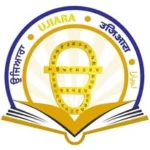Kartar Singh Sarabha: The Young Martyr of India’s Freedom Struggle
Kartar Singh Sarabha (24 May 1896 – 16 November 1915) was one of India’s youngest and most passionate revolutionaries. At the age of just 15, he joined the Ghadar Party and quickly rose to become one of its most prominent figures. His intense patriotism and courage marked him as a fearless leader in the Indian independence movement. At only 19 years old, he was executed at Lahore Central Jail for his role in the failed uprising of 1915, becoming one of the youngest martyrs of the Indian freedom struggle.
Early Life and Education
Kartar Singh was born in the village of Sarabha near Ludhiana, Punjab, into a Jat Sikh family. After the early death of his father, he was raised by his mother and grandfather. Even in his childhood, he showed signs of brilliance, independence, and a strong sense of justice.
He completed his early education in his village and later attended Malwa Khalsa High School in Ludhiana. After studying up to the eighth grade, he travelled to the United States in July 1912 to pursue higher education and enrolled at the University of California, Berkeley. However, some historical sources suggest he may not have officially enrolled and instead worked in a mill in Astoria, Oregon.
While in the U.S., Kartar Singh became deeply influenced by the discrimination and hardships faced by Indian immigrants, especially labourers. These experiences awakened a fierce sense of nationalism in him. He joined the Nalanda Club, an Indian student association at Berkeley, where his political awareness and revolutionary spirit grew stronger.
Involvement with the Ghadar Party
Kartar Singh came into contact with Sohan Singh Bhakna, the founder of the Ghadar Party, who became his mentor and inspired him to join the struggle for India’s independence. Sohan Singh affectionately called him “Baba Gernal” (General), recognizing his zeal and leadership skills.
In 1913, the Ghadar Party was formed in California with the goal of overthrowing British rule in India through armed revolution. Kartar Singh immediately joined the cause, abandoning his studies to work closely with party leaders like Lala Hardayal. He moved in with Hardayal and played a key role in producing the Gurmukhi edition of the party’s newspaper, Ghadar. He wrote revolutionary poetry and articles, aiming to awaken the Indian masses to the need for independence.
The Ghadar newspaper, launched on 1 November 1913, was published in multiple languages — Punjabi, Hindi, Urdu, Bengali, Gujarati, and Pashto — and distributed to Indians around the world. Its powerful message reached workers, soldiers, and farmers alike, fueling the dream of freedom.
Return to India and the Failed Uprising
With the outbreak of World War I in 1914, the Ghadar Party saw a strategic opportunity to initiate a revolt in India. The party published a call to arms in its 5 August 1914 edition of Ghadar, declaring war on British rule. Thousands of copies were smuggled into India and distributed in military cantonments and villages.
Kartar Singh returned to India in October 1914 aboard the SS Salamin, accompanied by leaders like Satyen Sen and Vishnu Ganesh Pingle. They carried letters of introduction from Jugantar revolutionary Jatin Mukherjee (Bagha Jatin) and met Rash Behari Bose in Banaras to coordinate plans for a massive uprising. However, many Ghadar activists were arrested upon arrival in India.
Despite these setbacks, a secret meeting was held near Ludhiana, where it was decided that funds would be raised through armed robberies to support the revolution. During one such raid, two revolutionaries, Waryam Singh and Bhai Ram Rakha, died in a bomb explosion.
Plans were made for a widespread mutiny on 21 February 1915, targeting British military bases in Mian Mir, Ferozepur, Ambala, and Delhi. But the movement was betrayed from within. A police informant, Kirpal Singh, exposed the plot, leading to mass arrests and the disarmament of native troops. The planned uprising collapsed before it could begin.
Arrest and Execution
After the failed revolt, Kartar Singh, along with Harnam Singh Tundilat and Jagat Singh, attempted to flee to Afghanistan but was captured at Chak No. 5 in Sargodha (then in Punjab, now Pakistan) and brought to trial in Lahore.
Despite his youth, Kartar Singh displayed remarkable courage during the trial. He took full responsibility for the revolutionary activities and refused to show remorse. When advised by the judge to alter his statement due to his age, he firmly refused. He declared:
“Why should I? If I had more than one life, I would sacrifice each of them for my country.”
Even while imprisoned in Lahore Central Jail, he attempted to escape by sawing through the iron bars of his window with stolen tools, though this effort was discovered. During his imprisonment, he gained 14 pounds in weight — a testament to his indomitable spirit.
On 16 November 1915, Kartar Singh Sarabha was hanged at Lahore Central Jail, along with other accused in the Lahore Conspiracy Case. He died proudly and fearlessly, believing that it was not a conspiracy but an open battle for freedom. At just 19 years of age, his sacrifice became a symbol of youthful courage and patriotism.
Legacy
Kartar Singh Sarabha left a profound impact on the Indian freedom struggle. Among those deeply inspired by him was Bhagat Singh, who idolized Sarabha and carried his photograph at all times. Bhagat Singh’s mother once said:
“Very often, Bhagat Singh would show me that photograph and say, ‘Dear mother, this is my hero, friend, and companion.’”
Kartar Singh’s story has been immortalized in history, literature, and cinema. In 1977, a Punjabi-language biographical film titled Shaheed Kartar Singh Sarabha was released in his honor.
To this day, Kartar Singh Sarabha remains a powerful symbol of revolutionary youth — a young man who gave up everything, including his life, for the dream of a free India. His name continues to inspire generations of Indians to stand up for justice, truth, and national pride.


Leave a Reply